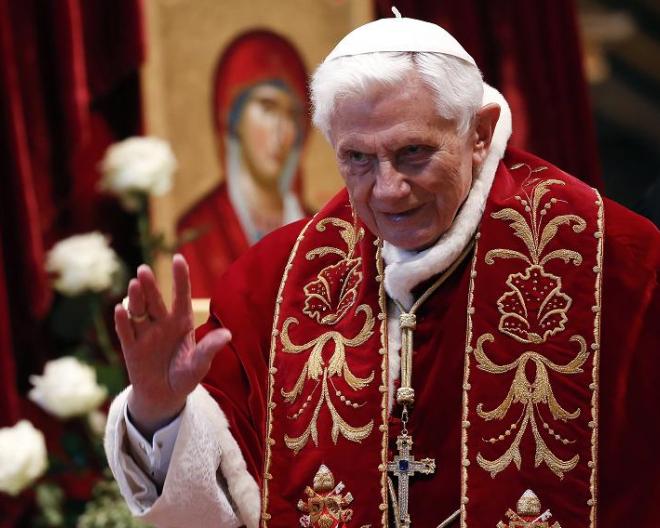 Benedict XVI is the first pope to resign since Celestine V did so in 1294 after little more than 5 months in office. (Some commentators name Gregory XII, who resigned in 1415, as the most recent papal retiree. It all depends on how voluntary one thinks resigning is. Gregory stepped down under tremendous pressure as part of a deal to settle the schism that followed the Avignon papacy.) Celestine’s Wikipedia entry has already been updated to add Benedict to the list of other papal retirees.
Benedict XVI is the first pope to resign since Celestine V did so in 1294 after little more than 5 months in office. (Some commentators name Gregory XII, who resigned in 1415, as the most recent papal retiree. It all depends on how voluntary one thinks resigning is. Gregory stepped down under tremendous pressure as part of a deal to settle the schism that followed the Avignon papacy.) Celestine’s Wikipedia entry has already been updated to add Benedict to the list of other papal retirees.
Though Benedict’s pontificate was not without its scandal and controversy—and the conspiracy theorists are undoubtedly already busy—the pontiff seems to have made a thoughtful decision that says much about how people today regard the papacy.
“In today’s world,” the pope said, “subject to so many rapid changes and shaken by questions of deep relevance for the life of faith, in order to govern the bark of St. Peter and proclaim the gospel, both strength of mind and body are necessary, strength which in the last few months has deteriorated in me to the extent that I have had to recognize my incapacity to adequately fulfill the ministry entrusted to me.” (Quoted in The New York Times)
The pope, in other words, needs to be visible and reasonably vigorous. Gone are the days when the pope might be seen by the public only when his funeral cortege left the papal palace (which seems to have been the case for at least one of the fourteenth century popes). Or, to put it another way, it is no longer enough simply to be the pope, the pope has to be able to do papal things—which, especially since the pontificate of John Paul II, means a fairly rigorous schedule of travel and public appearances. In making his decision, Benedict no doubt had in mind the final years of John Paul II’s pontificate, when he suffered from Parkinson’s disease and, according to some, eventually became too incapacitated to even consider resigning.
So now a new pope will step into this redefined and continually evolving office. The question is who it will be and what that choice might signal about the direction of the Roman Catholic Church.

Leave a Reply
You must be logged in to post a comment.